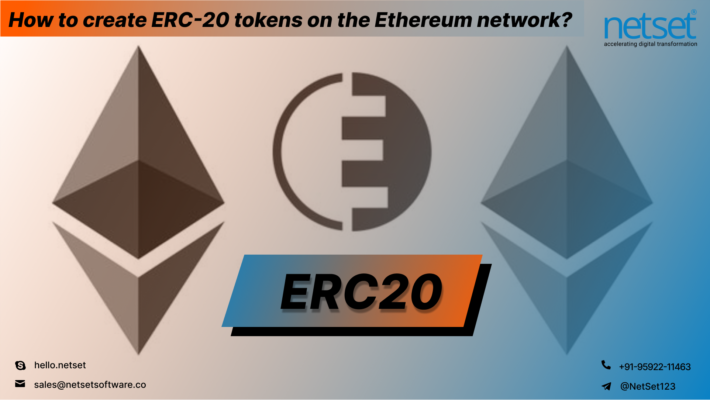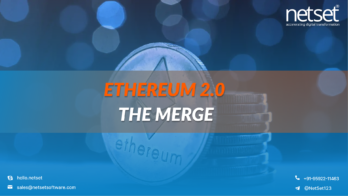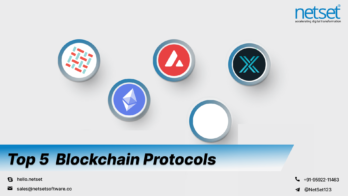The ERC20 tokens’ acceptance and use have increased significantly over the past few years in the Ethereum blockchain community. Nowadays, the majority of Ethereum contracts are ERC-20 compliant. Therefore, understanding this token in depth can be quite helpful for Ethereum developers and investors.
The success and widespread use of ERC-20 tokens are attribute to characteristics like simplicity, usability, and deployment ease. By providing restrictions of interaction with other tokens together with purchasing requirements. The ERC20 standard solves a significant issue that blockchain-based markets and crypto-wallets face.
ERC20 tokens are implemented as smart contracts and, like other Ethereum tokens, are decentralized and performed on the Ethereum Virtual Machine.
Solidity
The second-largest cryptocurrency market by market capitalization, Ethereum, under the leadership of Christian Reitwiessner. Which is published Solidity in 2015, a brand-new programming language. The following is a list of some essential characteristics of solidity:
- A high-level programming language called Solidity explicitly created for implementing smart contracts.
- It is an object-orient (contract-orient) language with statically type objects.
- Python, C++, and JavaScript, which run on the Ethereum Virtual Machine, have a significant influence on Solidity (EVM).
- Solidity allows advanced user-defined programming, libraries, and inheritance.
- For platforms that operate blockchains, Solidity is the core language.
- Voting, blind bidding, crowdsourcing, multi-signature wallets, and other types of contracts can be made using Solidity.
In this blog, we’ll demonstrate how to easily establish an ERC20 contract using Solidity and distribute an ERC20 token. Let’s quickly review ERC20 first before moving on.
What is ERC20?
The ERC20 standard outlines the collection of (simple and fundamental) functions that all ERC20 tokens must support in order to be integrated with other contracts, marketplaces, or wallets.

With the help of these features, third parties, such as cryptocurrency wallet apps, can check a user’s account balance, and properly authorize fund transfers can be make to another user.
The smart contract specifies two particular events.

These events are trigger or emit when a user is give permission to withdraw tokens from an account and the tokens are transfer.
Most ERC20 tokens include other fields like:
![]()
What Characteristics do ERC-20 tokens Have?
The majority of tokens on the Ethereum network are ERC-20 tokens. They are refer to as utility tokens and are create to be use for paying for services. Additionally, they can be use to pay for products and services.
These Tokens Are:
💻 Fungible – Each token has the same unique code as every other token, however, transaction histories can be utilized to distinguish and segregate the tokens involved.
🛫 Transferable –They can be transferred from one address to another.
⛏️ Fixed Supply-To prevent developers from issuing additional tokens and increasing the supply, a set quantity of tokens must be produced.
Construct an ERC20 token in Solidity.
1- Determine mapping elements
You must locate two mapping objects in accordance with the Solidity notion for a key/value or associative array:
![]()
.mapping(address => uint256) – Defines an associative array with values of type uint256 and keys of type address (a number used to represent account addresses) (a 256-bit integer that is used to store token balances).
The token balance of each owner’s account will be keep in balances, the initial mapping object.
Allow – This second mapping object will contain all of the accounts that give permission to withdraw tokens from a certain account along with the maximum withdrawal amount permit for each account.
In the blockchain, along with all other contract data, these mappings will be kept. They will then be mine in order to spread updates among all user nodes in the network. Because users of a smart contract must pay for blockchain storage, one should always attempt to keep storage sizes as small as possible.
Let’s now begin to incorporate ERC20 logic into the appropriate routines.
2- Determine the quantity of ICO tokens.
The maximum amount of ICO tokens can be adjust in a variety of different ways. But in this post, we’ll use the easiest route by setting the entire number of tokens at the time the contract is create and giving them all initially to the account owner (the account that deployed the smart contract):

Constructor
After the contract is deploy, Ethereum automatically calls this special method to initialize the state of the token using parameters supply by the account that deploy the contract.
- msg
A global variable that Ethereum itself declares and fills with information that is necessary to carry out the contract.
- Msg.sender
- the field containing the Ethereum account running the active contract function.
It is only possible for the account in charge of deployment to access a contract’s function Object() { [native code] } because it is this function that, after the contract has started, distributes the available tokens to the account designated as the “contract owner” for each contract.
3- Discover the total supply of tokens.
This function is in charge of reporting the total number of tokens distributed by this contract, regardless of the owner.
- Obtain the owner’s token balance.
Balanceof
the procedure in charge of returning a token account’s most recent token balance, identified by its owner’s address.
- Shift Tokens to a different account.

Transfer
The procedure that transfers numTokens (the number of tokens) from the owner’s balance to the receiver (another user).
Msg.sender
It represents the operating owner who is transferring ownership. Tokens can only be transfer to other users by the token’s owner.
Require
Solidity’s predicate assertion statement. The transaction will roll back instantly and no modifications will be made to the blockchain if the account does not have an adequate balance to carry out the transfer and this statement is unsuccessful.
4. Allow delegates to take token withdrawals.
A token marketplace situation is where this function is most frequently utilize.

Approve
The capability enables a delegate account to obtain consent from the message. sender (the owner) before taking tokens out of their account and transferring them to other accounts.
This function enables the marketplace to complete the transaction without needing prior clearance, making it most commonly utilize in instances when owners are selling tokens on a marketplace.
This function terminates execution by triggering an Approval event.
5. Get the tokens approve for withdrawal information in
Most scenarios using token marketplaces use this function.

This function returns the current number of tokens that have been grant by an owner to a particular delegate, as specify in the approve function.
- Token transfers by authorized delegates.
Transferfrom

Transferring owner funds to a third-party account is a feature that lets the delegate who approved the withdrawal do so.
The function starts with two required statements to check whether the transaction carry out is genuine, whether the owner has an adequate balance to transfer the tokens, and whether the delegate has been given permission to withdraw the numTokens.
The numTokens are also subtract from the delegate’s allowance by this function. The delegate is permitted to divide their allot amount into multiple separate withdrawals in accordance with customary marketplace practice.
You’ll have a legitimate ERC20 implementation after completing this step. However, there are a few extra procedures need to obtain a token with industrial strength.
Ethereum Contract Deployment
Developers of Ethereum frequently use deployment tools like Truffle or Remix (which is a simpler tool compared to Truffle). Installing the MetaMask plugin on your browser and having a Rinkeby account—a test network for Ethereum—with at least one Rinkeby Ether in it are prerequisites for using Remix.
Your contract will be distribute to each node in the network after deployment. Therefore, any modifications you make to the contract will be transmit to all involve nodes.
After everything is install, go to Remix and put your code there along with the SafeMath library and the pragma statement.
Copy the code into the web editor, then switch to the second tab and select “Deploy.” You’ll successfully deploy an ERC20 token after approving the confirmation of the transaction! It will be prepare to be bought, paid for, and transfer using the Blockchain.
Conclusion
This article’s contract serves as a brief illustration of how Ethereum smart contracts are create. Depending on how you use smart contracts, their complexity will rise.
Business Experience
- Modeling user interactions
- Option to either manufacture or burn tokens
- Introduction of lifecycle modifications,
- Requirements for admin-level powers, etc.
You can produce ERC20 tokens on your own by following the instructions in this article. You can successfully develop and distribute ERC20 tokens by carefully following the challenging stages and paying attention to every little detail.
Even though the method’s fundamentals don’t appear to be very complicate, carrying out the complete process flawlessly and effectively might be a real challenge. It should be note that developing and distributing ERC20 tokens that meet your needs can be a challenging undertaking that calls for careful planning, diligent work, professional guidance, and appropriate oversight to ensure smooth operations.
Dealing with all the various complications of developing and distributing an ERC20 token can be made significantly simpler for you by working with a highly effective Ethereum development team or company. You may effortlessly execute all of your needs, satisfy all of your objectives, and effectively design and distribute your ERC20 token by utilizing the experience and skills of Ethereum professionals.
One of the top firms in the blockchain industry for software development is NetSet Software. Our team of professionals can assist you with any type of Ethereum service you need thanks to their highly skilled developers. Please feel free to contact our experts if you’re seeking a blockchain development partner for developing and implementing ERC20 tokens or other Ethereum-related services.



